The Effect of Urban Land-Use Change on Runoff Water Quality: A Case Study in Hangzhou City
Abstract
:1. Introduction
2. Materials and Methods
2.1. Study Area
2.2. Runoff Data Acquisition
2.3. Acquisition of Land-Use Data
2.4. Land-Use Classification
3. Results and Discussion
3.1. Redundancy Analysis Results
3.2. PLS (Partial Least Squares) Regression Analysis Results
3.3. Origin Fitting Prediction Results
4. Conclusions
Author Contributions
Funding
Institutional Review Board Statement
Informed Consent Statement
Data Availability Statement
Conflicts of Interest
References
- Han, Q.; Tong, R.; Sun, W.; Zhao, Y.; Yu, J.; Wang, G.; Jin, Y. Anthropogenic influences on the water quality of the Baiyangdian lake in north China over the last decade. Sci. Total Environ. 2020, 701, 134929. [Google Scholar] [CrossRef]
- Sener, S.; Sener, E.; Davraz, A. Evaluation of water quality using water quality index (WQI) method and GIS in Aksu River (SW-Turkey). Sci. Total Environ. 2017, 584, 131–144. [Google Scholar] [CrossRef]
- Yan, J.X.; Liu, J.L.; Ma, M.Y. In situ variations and relationships of water quality index with periphyton function and diversity metrics in Baiyangdian Lake of China. Ecotoxicology 2014, 23, 495–505. [Google Scholar] [CrossRef] [PubMed]
- Zhang, Y.; Guo, F.; Meng, W.; Wang, X. Water quality assessment and source identification of Daliao river basin using multivariate statistical methods. Environ. Monit. Assess. 2009, 152, 105–121. [Google Scholar] [CrossRef]
- Geng, M.; Wang, K.; Yang, N.; Li, F.; Zou, Y.; Chen, X.; Xie, Y. Evaluation and variation trends analysis of water quality in response to water regime changes in a typical river-connected lake (Dongting lake), China. Environ. Pollut. 2020, 268, 115761. [Google Scholar] [CrossRef]
- Pereira, M.; Cavalheri, P.; de Oliveira, M.; Magalhaes, F. A multivariate statistical approach to the integration of different land-uses, seasons, and water quality as water resources management tool. Environ. Monit. Assess. 2019, 191, 539. [Google Scholar] [CrossRef]
- Ren, J.; Zheng, Z.; Li, Y.M.; Lv, G.; Wang, H.; Lyu, C.; Huang, G.; Liu, C.; Du, M.; Mu, S.; et al. Remote observation of water clarity patterns in three Gorges reservoir and Dongting Lake of China and their probable linkage to the three Gorges dam based on Landsat 8 imagery. Sci. Total Environ. 2018, 625, 1554–1566. [Google Scholar] [CrossRef] [PubMed]
- Rangel-Peraza, J.G.; de Anda, J.; González-Farias, F.; Erickson, D. Statistical assessment of water quality seasonality in large tropical reservoirs. Lakes Reserv. Res. Manag. 2009, 14, 315–323. [Google Scholar] [CrossRef]
- Yaghoubi, B.; Hosseini, S.A.; Nazif, S.; Daghighi, A. Development of dam’s optimum operation rules considering water quality issues and climatic change data analysis. Sustain. Cities Soc. 2020, 63, 102467. [Google Scholar] [CrossRef]
- Giri, S.; Qiu, Z. Understanding the relationship of land uses and water quality in twenty first century: A review. J. Environ. Manag. 2016, 173, 41–48. [Google Scholar] [CrossRef] [Green Version]
- Korkanç, Y.; Kayıkç, S.; Korkanç, M. Evaluation of spatial and temporal water quality in the Akkaya dam watershed (niğde, turkey) and management implications. J. Afr. Earth Sci. 2017, 129, 481–491. [Google Scholar] [CrossRef]
- Keeler, B.; Polasky, S.; Brauman, K.; Johnson, K.; Finlay, J.; O’Neill, A.; Kovacs, K.; Dalzell, B. Linking water quality and well-being for improved assessment and valuation of ecosystem services. Proc. Natl. Acad. Sci. USA 2012, 109, 18619–18624. [Google Scholar] [CrossRef] [PubMed] [Green Version]
- Duan, S.; Kaushal, S.; Groffman, P.; Band, L.; Belt, K. Phosphorus export across an urban to rural gradient in the Chesapeake Bay watershed. J. Geophys. Res. 2012, 117, G01025. [Google Scholar] [CrossRef] [Green Version]
- Phaneuf, D.; Smith, K.; Palmquist, R.; Pope, J. Integrating property values and local recreation models to value ecosystem services in urban watersheds. Land Econ. 2008, 84, 361–381. [Google Scholar] [CrossRef]
- Camara, M.; Jamil, N.R.; Abdullah, A. Impact of land uses on water quality in Malaysia: A review. Ecol. Process. 2019, 8, 1–10. [Google Scholar] [CrossRef]
- Groffman, P.; Law, N.; Belt, K.; Band, L.; Fisher, G. Nitrogen fluxes and retention in urban watershed ecosystems. Ecosystems 2004, 7, 393–403. [Google Scholar] [CrossRef]
- Luo, Z.; Shao, Q.; Zuo, Q.; Cui, Y. Impact of land use and urbanization on river water quality and ecology in a dam dominated basin. J. Hydrol. 2020, 584, 124655. [Google Scholar] [CrossRef]
- Duarte, L.; Espinha Marques, J.; Teodoro, A.C. An Open Source GIS-Based Application for the Assessment of Groundwater Vulnerability to Pollution. Environments 2019, 6, 86. [Google Scholar] [CrossRef] [Green Version]
- Brainwood, M.A.; Burgin, S.; Maheshwari, B. Temporal variations in water quality of farm dams: Impacts of land-use and water sources. Agric. Water Manag. 2004, 70, 151–175. [Google Scholar] [CrossRef]
- Wie, J.; Hong, S.O.; Byon, J.Y.; Ha, J.C.; Moon, B.K. Sensitivity Analysis of Surface Energy Budget to Albedo Parameters in Seoul Metropolitan Area Using the Unified Model. Atmosphere 2020, 11, 120. [Google Scholar] [CrossRef] [Green Version]
- Afed, K.; Jiang, J.; Wang, P. Land use impacts on surface water quality by statistical approaches. Glob. J. Environ. Sci. Manag. 2018, 4, 231–250. [Google Scholar]
- Chen, L.; Liu, C.; Li, Y.; Wang, G. Impacts of climatic factors on runoff coefficients in source regions of the Huanghe River. Chin. Geograph. Sci. 2007, 17, 47–55. [Google Scholar] [CrossRef] [Green Version]
- Delkash, M.; Al-Faraj, F.A.; Scholz, M. Impacts of anthropogenic land-use changes on nutrient concentrations in surface water bodies: A review. CLEAN-Soil Air Water 2018, 46, 1800051. [Google Scholar] [CrossRef] [Green Version]
- Lee, J.M.; Park, M.; Park, B.K.; Choi, J.; Kim, J.; Kim, K.; Kim, Y. Evaluation of Water Circulation by Modeling: An Example of Nonpoint Source Management in the Yeongsan River Watershed. Sustainability 2021, 13, 8871. [Google Scholar]
- Du, S.; Shi, P.; Van Rompaey, A.; Wen, J. Quantifying the impact of impervious surface location on flood peak discharge in urban areas. Nat. Hazards 2015, 76, 1457–1471. [Google Scholar] [CrossRef]
- Fashae, O.A.; Ayorinde, H.A.; Olusola, A.O. Landuse and surface water quality in an emerging urban city. Appl. Water Sci. 2019, 9, 25. [Google Scholar] [CrossRef] [Green Version]
- Saber, A.; James, D.E.; Hannoun, I.A. Effects of lake water level fluctuation due to drought and extreme winter precipitation on mixing and water quality of an alpine lake, case study: Lake Arrowhead, California. Sci. Total Environ. 2020, 714, 136762. [Google Scholar] [CrossRef] [PubMed]
- Hermides, D.; Makri, P.; Kontakiotis, G.; Antonarakou, A. Advances in the Coastal and Submarine Groundwater Processes: Controls and Environmental Impact on the Thriassion Plain and Eleusis Gulf (Attica, Greece). J. Mar. Sci. Eng. 2020, 8, 944. [Google Scholar] [CrossRef]
- Lopes, M.C.; Mello, A.L.; Lopes, M.B.; Martins, M.V.; Araújo, R.C.; Farias, R.; Torres, N.E.; Sanches, L.F.; Leal, F.A.; Tarlé, T.C. A case study of factors controlling water quality in two warm monomictic tropical reservoirs located in contrasting agricultural watersheds. Sci. Total Environ. 2021, 762, 144511. [Google Scholar] [CrossRef] [PubMed]
- El Sayed, M.A. Factors Controlling the Distribution and Behaviour of Organic Carbon and Trace Elements in a Heavily Sewage Polluted Coastal Envoironment. Mar. Sci. 2002, 13, 21–46. [Google Scholar] [CrossRef]
- Tam, N.; Wong, Y. Spatial variation of heavy metals in surface sediments of Hong Kong mangrove swamps. Environ. Pollut. 2000, 110, 195–205. [Google Scholar] [CrossRef]
- Liu, J.; Zhang, X.; Wu, B.; Pan, G.; Xu, J.; Wu, S. Spatial scale and seasonal dependence of land use impacts on riverine water quality in the Huai River basin, China. Environ. Sci Pollut Res. Int. 2017, 24, 20995–21010. [Google Scholar] [CrossRef]
- Yadav, S.; Babel, M.S.; Shrestha, S. Land use impact on the water quality of large tropical river: Mun River Basin, Thailand. Environ. Monit. Assess. 2019, 191, 1–22. [Google Scholar] [CrossRef]
- Liu, W.; Zhang, Q.; Liu, G. Influences of watershed landscape composition and configuration on lake-water quality in the Yangtze River basin of China. Hydrol. Process. 2012, 26, 570–578. [Google Scholar] [CrossRef]
- Gorgoglione, A.; Gregorio, J.; Ríos, A. Influence of land use/land cover on surface-water quality of Santa Lucìa river, Uruguay. Sustainability 2020, 12, 4692. [Google Scholar] [CrossRef]
- Carlson, R.R.; Foo, S.A.; Asner, G.P. Land use impacts on coral reef health: A ridge-to-reef perspective. Front. Mar. Sci. 2019, 6, 562. [Google Scholar] [CrossRef]
- Ding, H.; Shi, W. Land-use/land-cover change and its influence on surface temperature: A case study in Beijing City. Inter. J. Rem. Sens. 2013, 34, 5503–5517. [Google Scholar] [CrossRef]
- Choudhury, D.; Das, K.; Das, A. Assessment of land use land cover changes and its impact on variations of land surface temperature in Asansol-Durgapur Development Region. Egypt. J. Remote Sens. Space Sci. 2019, 22, 203–218. [Google Scholar] [CrossRef]
- Haidary, A.; Amiri, B.J.; Adamowski, J.; Fohrer, N.; Nakane, K. Assessing the Impacts of Four Land Use Types on the Water Quality of Wetlands in Japan. Water Resour. Manag. 2013, 27, 2217–2229. [Google Scholar] [CrossRef]
- Carstens, D.; Amer, R. Spatio-temporal analysis of urban changes and surface water quality. J. Hydrol. 2019, 569, 720–734. [Google Scholar] [CrossRef]
- Stefanidis, K.; Panagopoulos, Y.; Mimikou, M. Response of a multi-stressed Mediterranean river to future climate and socio-economic scenarios. Sci Total Environ. 2018, 627, 756–769. [Google Scholar] [CrossRef]
- Mack, L.; Andersen, H.E.; Beklioğlu, M. The future depends on what we do today-Projecting Europe’s surface water quality into three different future scenarios. Sci. Total Environ. 2019, 668, 470–484. [Google Scholar] [CrossRef] [PubMed]
- Ahearn, D.S.; Sheibley, R.W.; Dahlgren, R.A.; Andrson, M.; Johnson, J.; Tate, K.W. land use and land cover influence on water quality in the last free-flowing river draining the western Sierra Nevada, California. J. Hydrol. 2005, 313, 234–247. [Google Scholar] [CrossRef]
- Glavan, M.; Bele, S.; Curk, M. Modelling Impacts of a Municipal Spatial Plan of Land-Use Changes on Surface Water Quality—Example from Goriška Brda in Slovenia. Water 2020, 12, 189. [Google Scholar] [CrossRef] [Green Version]
- Louwanda, W.; William, R. Extension forestry and natural resources, what is focal coli form? Why is it important? Management 2013, 26, 9–27. [Google Scholar]
- Astuti, I.S.; Sahoo, K.; Milewski, A. Impact of land use land cover (LULC) change on surface runoff in an increasingly urbanized tropical watershed. Water Res. Manag. 2019, 33, 4087–4103. [Google Scholar] [CrossRef]
- Henderson, L.; Mahoney, C.; McClelland, C.; Amber, M. The effect of Landuse and Land Cover on Water Quality in Urban Environments; Natural Resources and Environmental Sciences (NRES): Urbana, IL, USA; Kansas State University: Manhattan, NY, USA, 2014. [Google Scholar]
- Barakat, A.; Ouargaf, Z.; Khellouk, R. land use/land cover change and effective impervious area in the béni-metal district (morocco) using remote sensing and gis. Earth Syst. Environ. 2019, 3, 113–125. [Google Scholar] [CrossRef]
- Mukherjee, F.; Singh, D. Assessing land use–land cover change and its impact on land surface temperature using LANDSAT data: A comparison of two urban areas in India. Earth Syst. Environ. 2020, 4, 385–407. [Google Scholar] [CrossRef]
- Khan, I.; Javed, T.; Khan, A. Impact assessment of land-use change on surface temperature and agricultural productivity in Peshawar-Pakistan. Environ. Sci. Pollu. Res. 2019, 26, 33076–33085. [Google Scholar] [CrossRef] [PubMed]
- Kim, H.; Jeong, H.; Jeon, J.; Bae, S. The Impact of Impervious Surface on Water Quality and Its Threshold in Korea. Water 2016, 8, 111. [Google Scholar] [CrossRef] [Green Version]
- Shuster, W.D.; Bonta, J.; Thurstron, H.; Warnemuende, E.; Smith, D.R. Impacts of impervious surface on watershed hydrology: A review. Urban. Water J. 2005, 2, 263–275. [Google Scholar] [CrossRef]
- Li, H.; Sharkey, L.J.; Hunt, W.F.; Davis, A.P. Mitigation of impervious surface hydrology using bioretention in North Carolina and Maryland. J. Hydrol. Eng. 2009, 14, 407–415. [Google Scholar] [CrossRef] [Green Version]
- Schueler, T.R.; Fraley-McNeal, L.; Cappiella, K. Is impervious cover still important? Review of recently research. J. Hydrol. Eng. 2009, 14, 309–315. [Google Scholar] [CrossRef] [Green Version]
- O’Driscoll, M.; Clinton, S.; Jefferson, A.; Manda, A.; McMillan, S. Urbanization effects on watershed hydrology and in-stream processes in the Southern United States. Water 2010, 2, 605–648. [Google Scholar] [CrossRef]
- Liu, Z.; Wang, Y.; Li, Z.; Peng, J. Impervious surface impact on water quality in the process of rapid urbanization in Shenzhen, China. Environ. Earth Sci. 2013, 68, 2365–2373. [Google Scholar] [CrossRef]
- Sliva, L.; Williams, D.D. Buffer zone versus whole catchment approaches to studying land-use impact on river water quality. Water Res. 2001, 35, 3462–3472. [Google Scholar] [CrossRef]

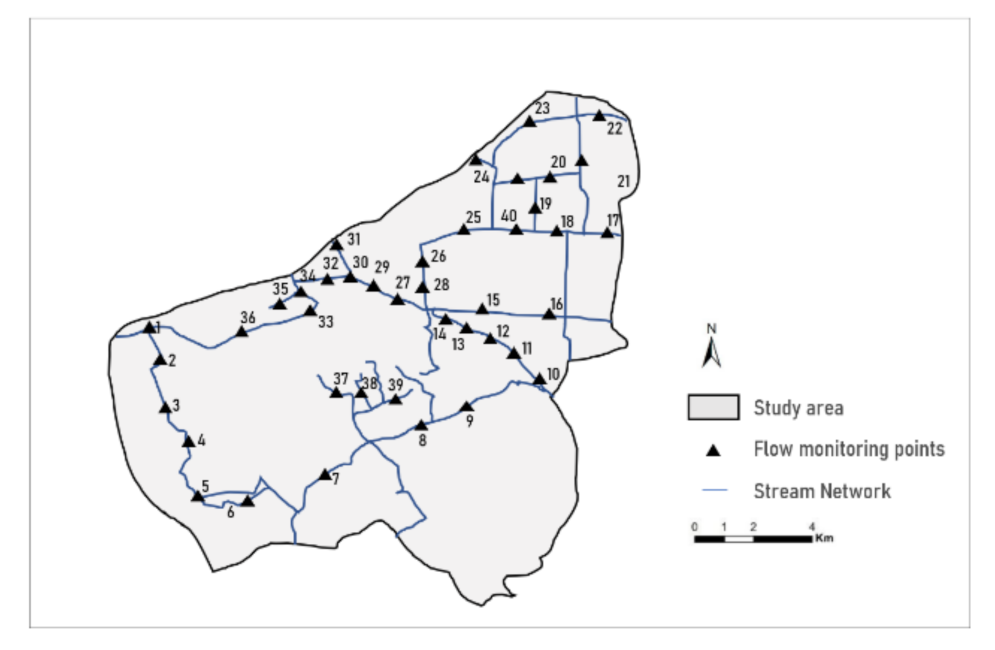
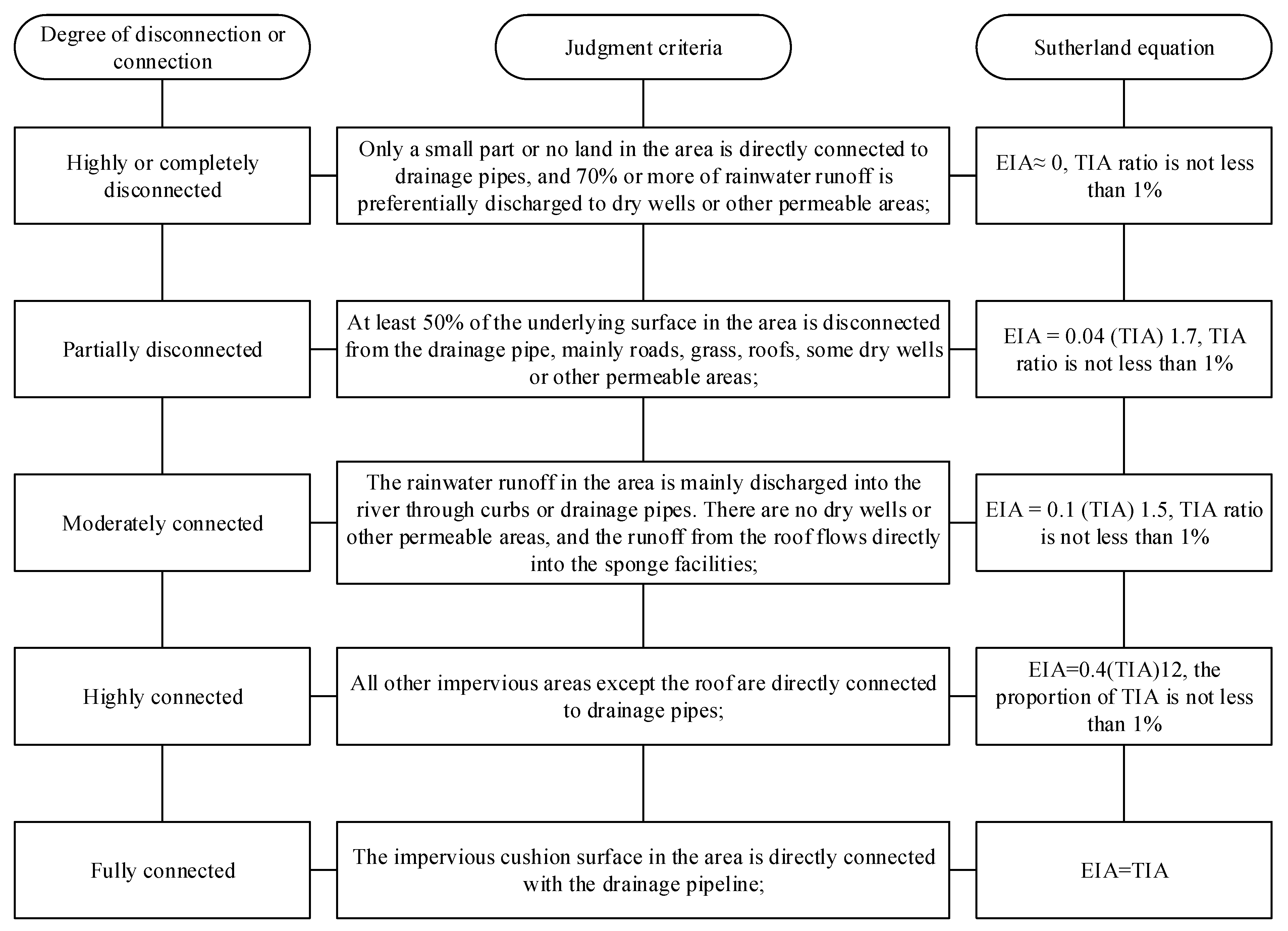
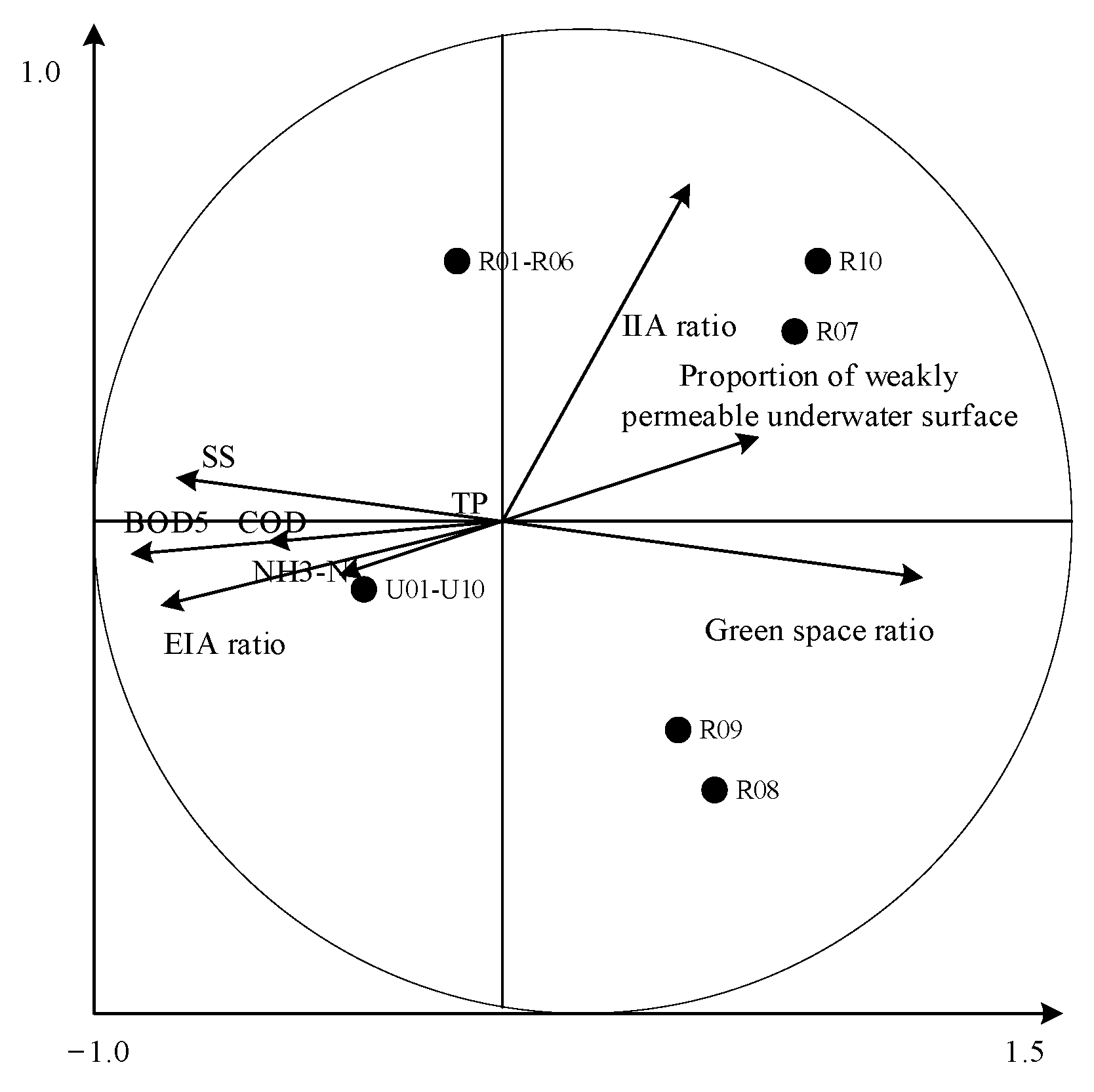
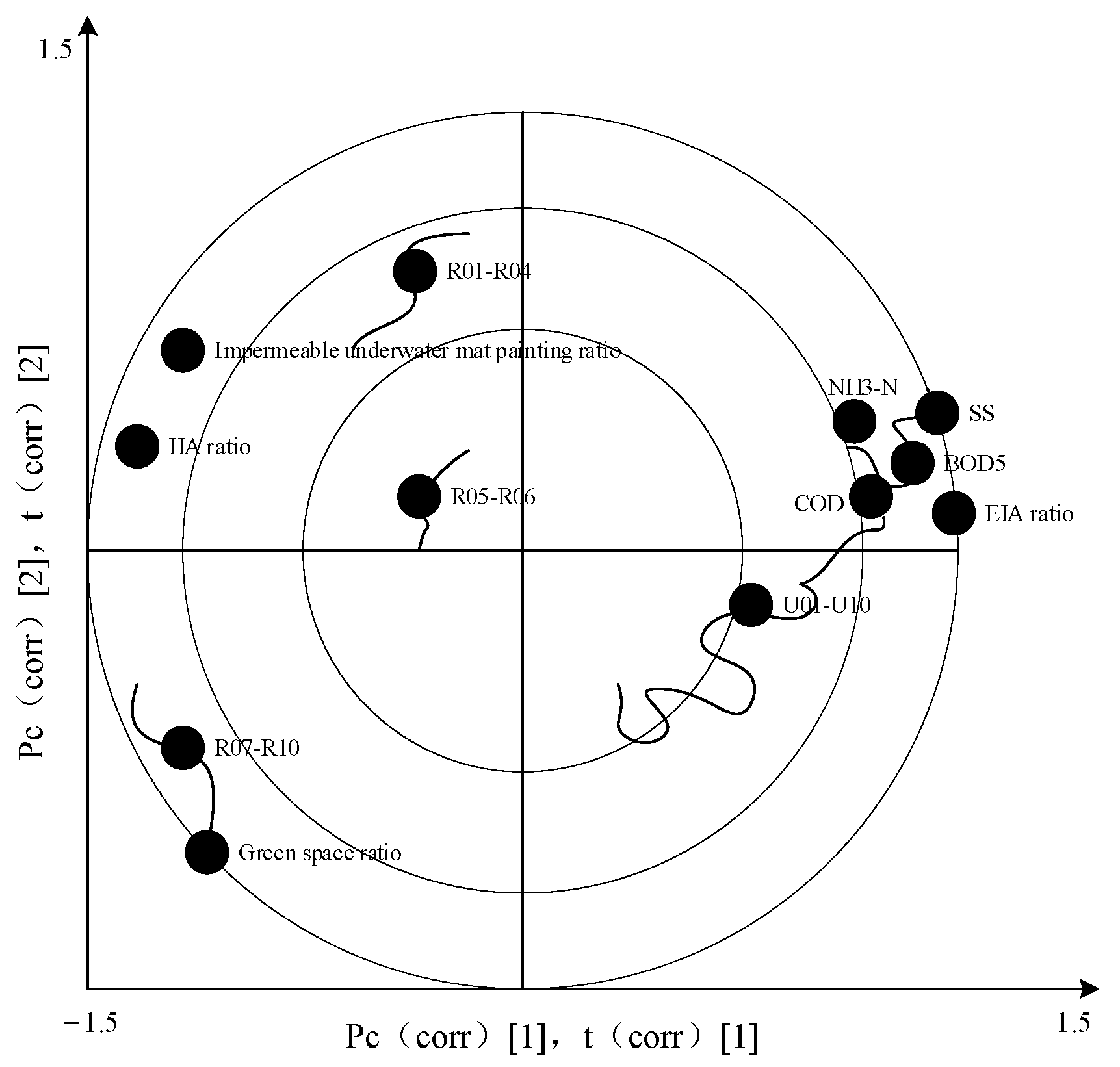
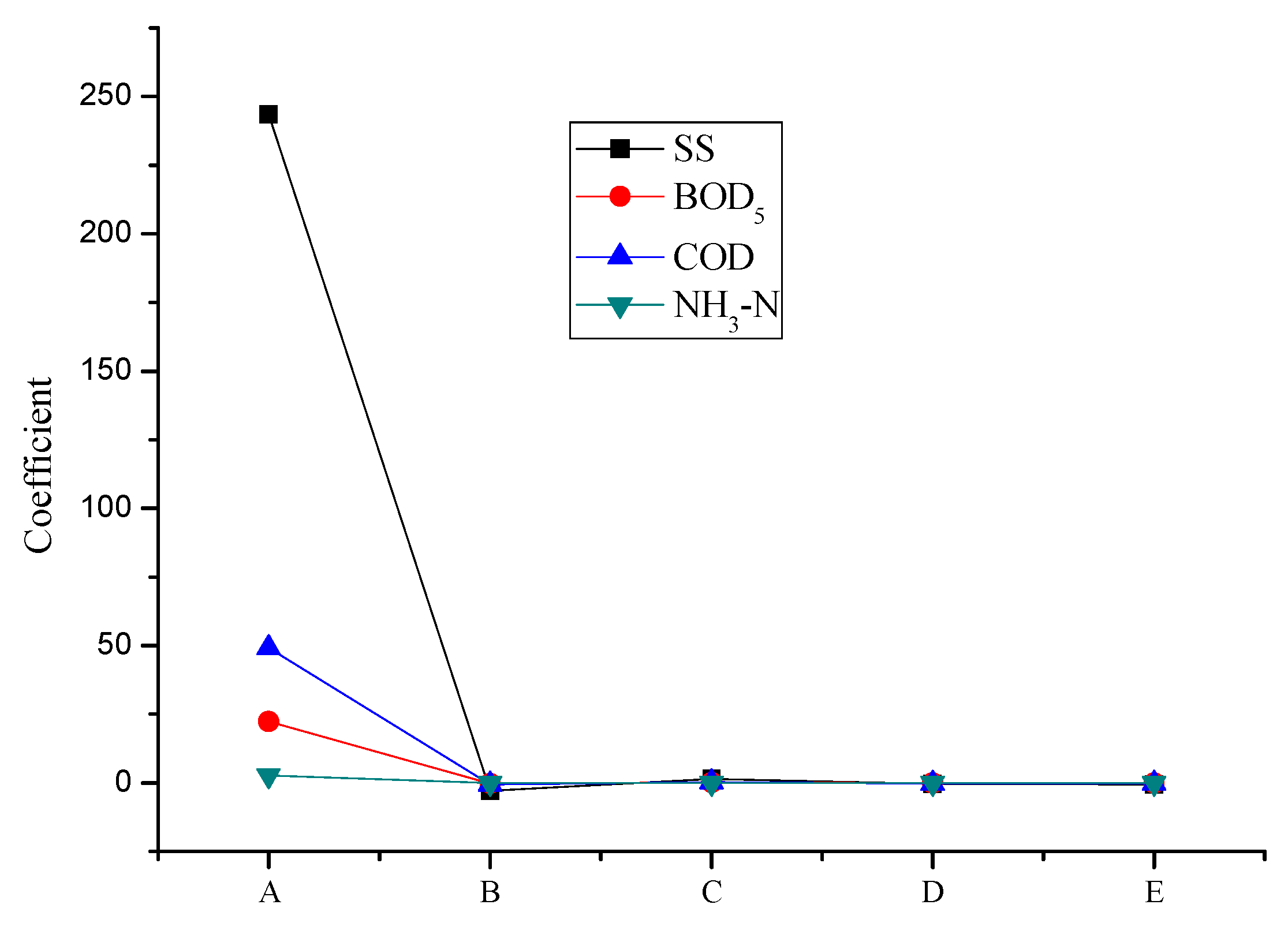


| Indicator | Maximum | Minimum | Mean (Std.) |
|---|---|---|---|
| TP (mg/L) | 2.5 | 0.16 | 0.56 (0.82) |
| SS (mg/L) | 62.75 | 11.63 | 28.52 (11.86) |
| BOD5 (mg/L) | 3.1 | 1.1 | 1.6 (0.39) |
| COD (mg/L) | 24.3 | 5.05 | 9.17 (2.73) |
| NH3-N (mg/L) | 0.62 | 0.04 | 0.19 (0.11) |
Publisher’s Note: MDPI stays neutral with regard to jurisdictional claims in published maps and institutional affiliations. |
© 2021 by the authors. Licensee MDPI, Basel, Switzerland. This article is an open access article distributed under the terms and conditions of the Creative Commons Attribution (CC BY) license (https://creativecommons.org/licenses/by/4.0/).
Share and Cite
Li, L.; Yu, Q.; Gao, L.; Yu, B.; Lu, Z. The Effect of Urban Land-Use Change on Runoff Water Quality: A Case Study in Hangzhou City. Int. J. Environ. Res. Public Health 2021, 18, 10748. https://doi.org/10.3390/ijerph182010748
Li L, Yu Q, Gao L, Yu B, Lu Z. The Effect of Urban Land-Use Change on Runoff Water Quality: A Case Study in Hangzhou City. International Journal of Environmental Research and Public Health. 2021; 18(20):10748. https://doi.org/10.3390/ijerph182010748
Chicago/Turabian StyleLi, Li, Qidi Yu, Ling Gao, Bin Yu, and Zhipeng Lu. 2021. "The Effect of Urban Land-Use Change on Runoff Water Quality: A Case Study in Hangzhou City" International Journal of Environmental Research and Public Health 18, no. 20: 10748. https://doi.org/10.3390/ijerph182010748
APA StyleLi, L., Yu, Q., Gao, L., Yu, B., & Lu, Z. (2021). The Effect of Urban Land-Use Change on Runoff Water Quality: A Case Study in Hangzhou City. International Journal of Environmental Research and Public Health, 18(20), 10748. https://doi.org/10.3390/ijerph182010748






